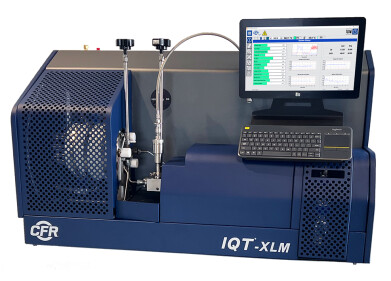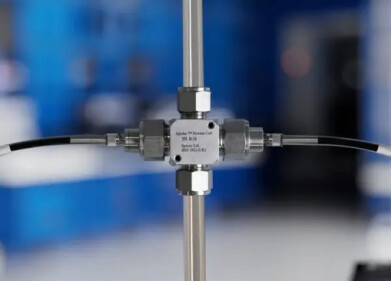Analytical Instrumentation
ASTM D8071 Site Precision Study Demonstrates Long-Term Precision & Analytical System Stability
Feb 14 2018
VUV Analytics, Inc. recently completed an exploratory precision study using ASTM Method D8071 and EPA 40 CFR 80.47 guidelines for measuring fuel parameters. Initial results indicate that D8071 shows exceptional precision relative to EPA referee methods when judged by the agency’s 20/20 rule. ASTM D8071, known also as “Standard Test Method for the Determination of Hydrocarbon Group Types and Select Hydrocarbon and Oxygenate Compounds in Automotive Spark-Ignition Engine Fuel using Gas Chromatography with Vacuum Ultraviolet Absorption Spectroscopy Detection (GC-VUV),” is approved for automated PIONA compound class analysis of finished gasoline samples. The site precision study performed at VUV Analytics headquarters demonstrated that D8071 is capable of superior precision as compared to separate referee EPA methods (D1319, D3606 and D5599) for typical gasoline compositional analysis parameters.
Method D8071 provides complete PIONA compound class characterization in a single measurement, potentially replacing the use of multiple legacy methods for this analysis. VUV Analytics promotes the method as having relatively simple instrumentation combined with automated analysis software that results in shorter run times and a more robust production solution than ASTM methods D6730 and D6839, as well as having the potential to replace the use of multiple ASTM methods (e.g. D5769, D5580, D1319, D6550, D3606, D4815, D5599, D5845) for measurement of gasoline samples. The VUV Analytics commercial application VUV PIONA+ ™ enables the automated analysis of hydrocarbon compound classes as well as the speciation of select gasoline compounds.
ASTM D8071 uses straightforward instrumentation: a gas chromatograph, a standard 30m nonpolar column, and a VGA vacuum ultraviolet detector. Bulk concentrations of the hydrocarbon classes of paraffins, isoparaffins, olefins, naphthenes, and aromatics (PIONA) are determined. Specific analytes can also be singled out for further characterization. The setup procedure is easy and requires no pre-column tuning or valve timing adjustments. Additionally, faster runtimes can be achieved given the method’s ability to handle co-elution among various species and hydrocarbon classes.
VUV PIONA+ product solution combines a VGA-100 vacuum ultraviolet (VUV) absorption GC detector and an analysis engine called VUV Analyze™. VUV Analyze™ software implements equations and fit procedures that result in the deconvolution of co-eluting peaks and accurate reporting of bulk hydrocarbons and individual compounds in mass or volume percent. VUV Analyze™ data processing includes a database library of VUV reference spectra, compound class information, density, approximate retention index values, relative response factors for each hydrocarbon class, and relative response factors for individually reported compounds.
EPA 40 CFR 80.47 defines a performance-based analytical test method approach for measuring fuel parameters. It outlines precision criteria for approval of the method defined fuel parameters. The criteria test states that the maximum allowable standard deviation computed from the results of a minimum of 20 tests made over 20 days on samples using good laboratory practices taken from a single homogeneous commercially available gasoline must be less than or equal to 0.3 times the reproducibility (R), where "R" equals the ASTM reproducibility of the referee method calculated at the measured fuel parameter level. The EPA precision criteria were applied to forty-seven commercial gasoline sample runs using ASTM D8071 with a VGA-100 detector over a period ranging from Jan 3 – Jan 23, 2018. No single result was omitted or defined as an outlier, and results were recorded and statistically compared to the EPA precision criteria. Table 1 shows that oxygen, aromatic, olefin and benzene standard deviations (SD) from forty-seven D8071 runs were all within the required maximum allowable SD specified by EPA, and typically 4 – 10X better than required. This initial site precision study highlights the long-term precision and analytical system stability inherent to ASTM D8071.
1: Site precision study results of D8071 using EPA 40 CFR 80.47 guidelines for measuring fuel parameters. Oxygen, aromatic, olefin and benzene standard deviations (SD) from forty-seven D8071 runs were all within the required maximum allowable SD specified by EPA, and typically 4 – 10X better than required.
Digital Edition
PIN 25.5 Oct/Nov 2024
November 2024
Analytical Instrumentation - Picturing Viscosity – How Can a Viscometer or a Rheometer Benefit You? - Sustainable Grease Formulations: Evaluating Key Performance Parameters and Testing Method...
View all digital editions
Events
Dec 03 2024 Dusseldorf, Germany
Dec 08 2024 Anaheim, CA, USA
Turkey & Black Sea Oil and Gas
Dec 11 2024 Istanbul, Turkey
Dec 19 2024 Aurangabad, India
Jan 20 2025 San Diego, CA, USA



















